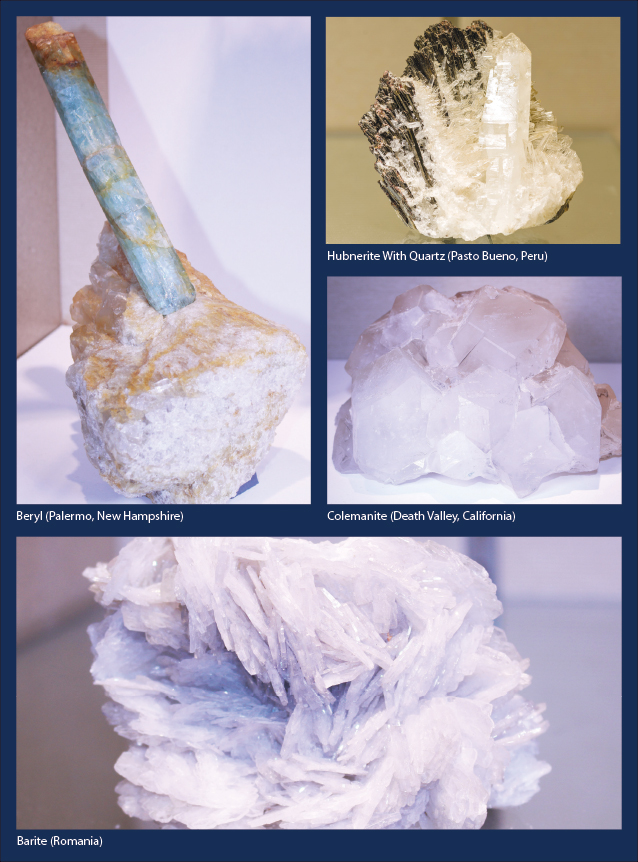
In September, the National Institutes of Health (NIH), in partnership with the Smithsonian Institution National Museum of Natural History, opened the Minerals in Medicine exhibition at the NIH Clinical Center in Bethesda, Maryland. The exhibition, which includes more than 40 minerals and metals that are essential components required for human biology and as sources used in the development of drugs and medical devices, is on loan from the National Museum of Natural History and will remain on display for 18 months.
Physicians from the NIH and geologists from the Smithsonian chose the items on display from the museum’s vast mineral collection. Below are four examples of the minerals currently on display.
Beryl (Palermo, New Hampshire)
The source of beryllium, a rare metal essential to high-resolution imaging, beryl is used for mammography and computed tomography (CT) scanners. Gems are named by their color: emerald (green beryl), aquamarine (blue beryl).
Hubnerite With Quartz (Pasto Bueno, Peru)
Hubnerite with quartz is a source of tungsten. Due to its high density and strength, hubnerite is used in radiation shielding, CT scanners, and surgical instruments.
Colemanite (Death Valley, California)
Colemanite is a source of boron, an element in borax and boric acid. Boric acid has antiseptic and antifungal properties. Boron may be useful in the treatment of arthritis and multiple myeloma.
Barite (Romania)
The main source of barium, barite can be swallowed by patients in a high-purity liquid form. Its density prevents x-ray penetration, making the outline of the gastrointestinal tract visible on an x-ray.
All photos and captions courtesy of the National Institutes of Health. ■

